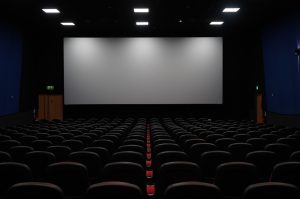South Loop residents have begun ditching their traditional gyms and getting hooked on the atmosphere of slamming weights to the ground, blaring music and a coach that isn’t afraid to push them harder than they have ever been pushed before.
They are CrossFit and high intensity training gyms and they are spurring a trend that is attracting all age groups. Three of these gyms have opened in the South Loop; two CrossFit gyms in Printer’s Row and a high intensity gym called Shred415, located in the Roosevelt Collection on Roosevelt Road.
Justin Quandt, owner of The Foundry at 730 S. Clark St., has been an athlete all his life and for him, nothing compares to CrossFit.
“What has really drawn me to CrossFit and our form of training is that it’s rooted in science and it’s results focused,” Quandt said.
“We don’t do anything that we don’t already know is effective. We don’t switch our training based on emerging trends.”
While the membership fees at these specialty gyms are higher than those at traditional gyms, Paul Wagner, one of the owners of South Loop Strength and Conditioning, said if you compare the fee for his gym to the cost of a personal trainer at a traditional gym, you are actually getting more bang for your buck with the CrossFit gym.
“Most large market gyms, your membership fee is basically an entrance fee,” Wagner said.
“It gets you in the door. Once you’re in, unless you have a broad knowledge of fitness, you have no idea what to do, which for most people leads to failure pretty quickly.”
Plus, there is the team atmosphere.

There is no slacking off when you are working out as a group, or as a team, Quandt said.
“It is intentionally group based; we approach it like a team sport. There is a coach here, we go over what we will be covering, we do a group warm up, we do the workout together as a team and people are supportive of one another.”
Working out as a team means not letting a teammate quit in the middle of a set of box jumps or forcing them to finish that last set of kettle bell swings.
“The biggest thing I tell people is that it’s fun,” Quandt said. “People see it as going to hang out with their friends while they just so happen to be working out. Fitness should be something you enjoy.”
Shred 415 also uses an instructor-led, high intensity interval training system. The regimen, which has participants alternate between treadmill work and weight training, is designed to increase muscle and burn calories in a fun and fast-paced environment.
Melissa Knepp, an instructor and manager at Shred 415, said the gym is unique.
“We have a DJ that spins our music,” Knepp said. “It’s dark, it’s high energy and it’s hard not to get caught up in that infectious state.”
With over 80 playlists and a nightclub feel, it’s members don’t even realize how hard they’re working.
Every workout at Shred415 is an hour long, except for the 5 a.m. express class, which lasts 45 minutes, giving people the option to exercise before they go to work and still ensuring an effective workout.
These specialty gyms aren’t for everyone though.
Glenn Collins, a member of XSport Fitness on South State Street, prefers a traditional gym because he thinks it offers him more variety.
“There are more machines for me to workout on and it gives me access to a room because I dance,” Collins said. “The biggest thing for me is that it is open for 24 hours.”
Another XSport Fitness member, Elizabeth Agueyo, is thinking about switching to a high interval intensity gym so she doesn’t have to deal with the crowds at XSport.
“CrossFit is more personalized,” Agueyo said. “There are smaller classes, so it is more one-on-one and you actually get to know the people.”
For Wagner, CrossFit has benefits that go beyond the exercise. He sees members of his gym as family, and admitted to attending a few of their weddings.
“It’s the people that are involved,” Wagner said. “The community aspect of it is why you are seeing more small training facilities where you have more personal investment by the people that work there … That is not what you are going to get at a traditional facility.”


























Be First to Comment